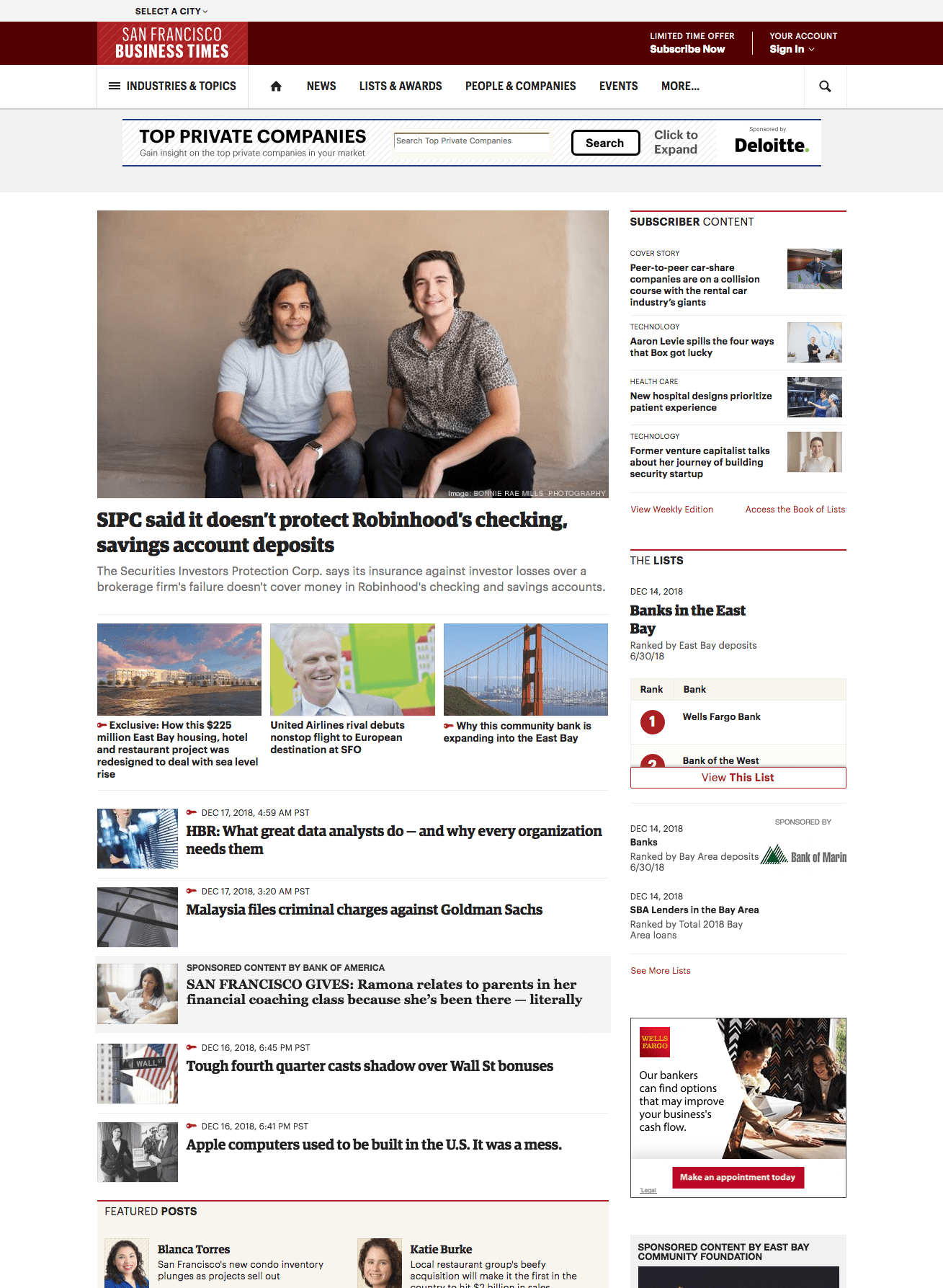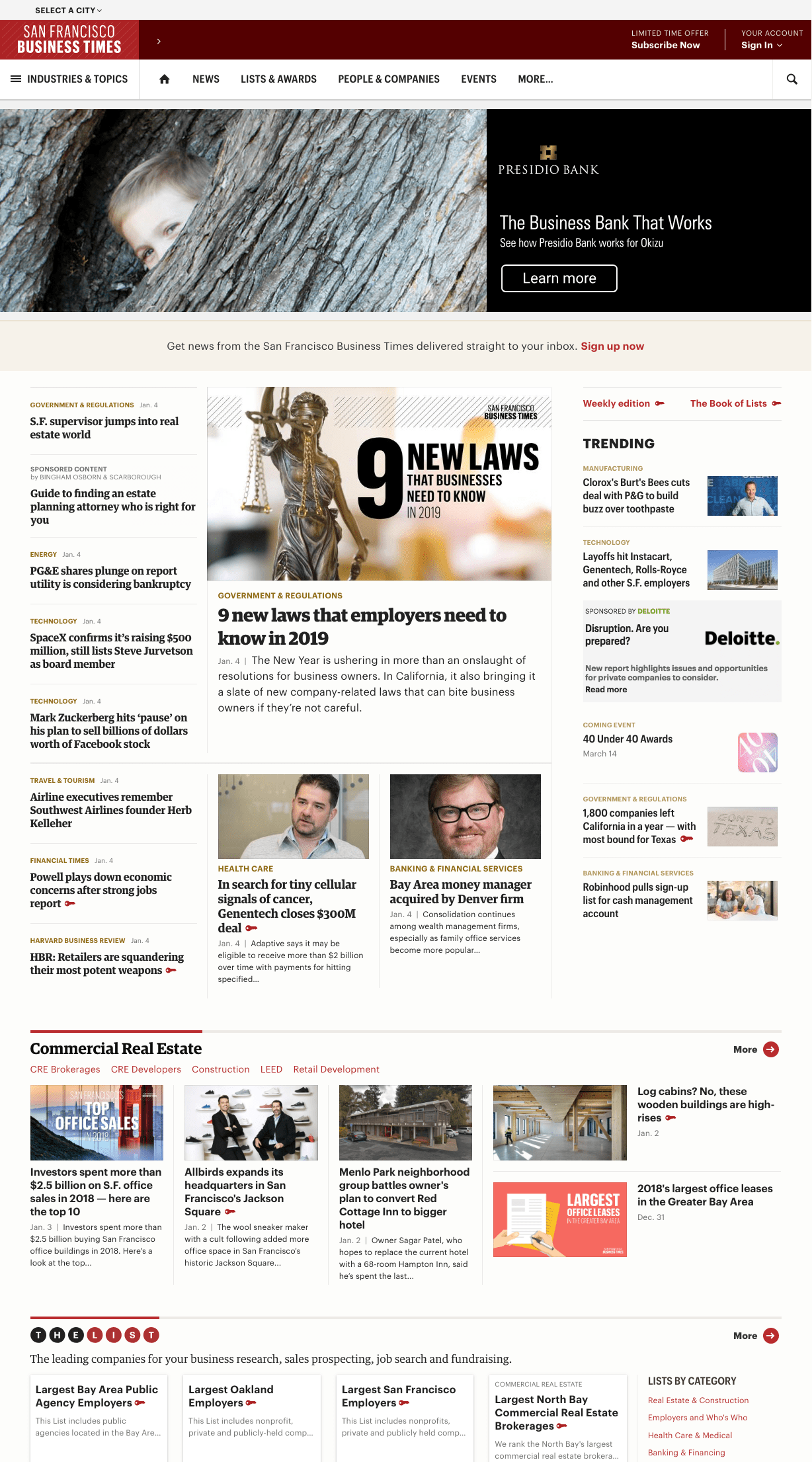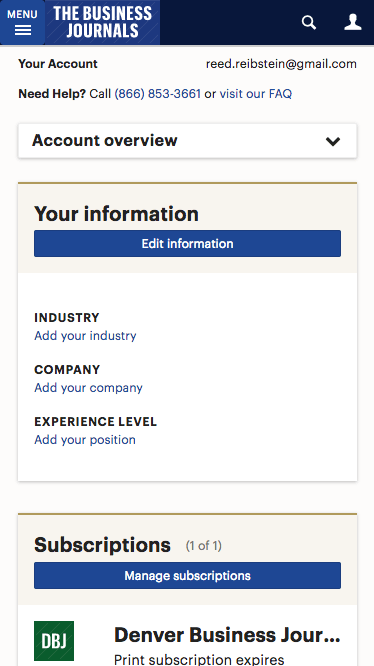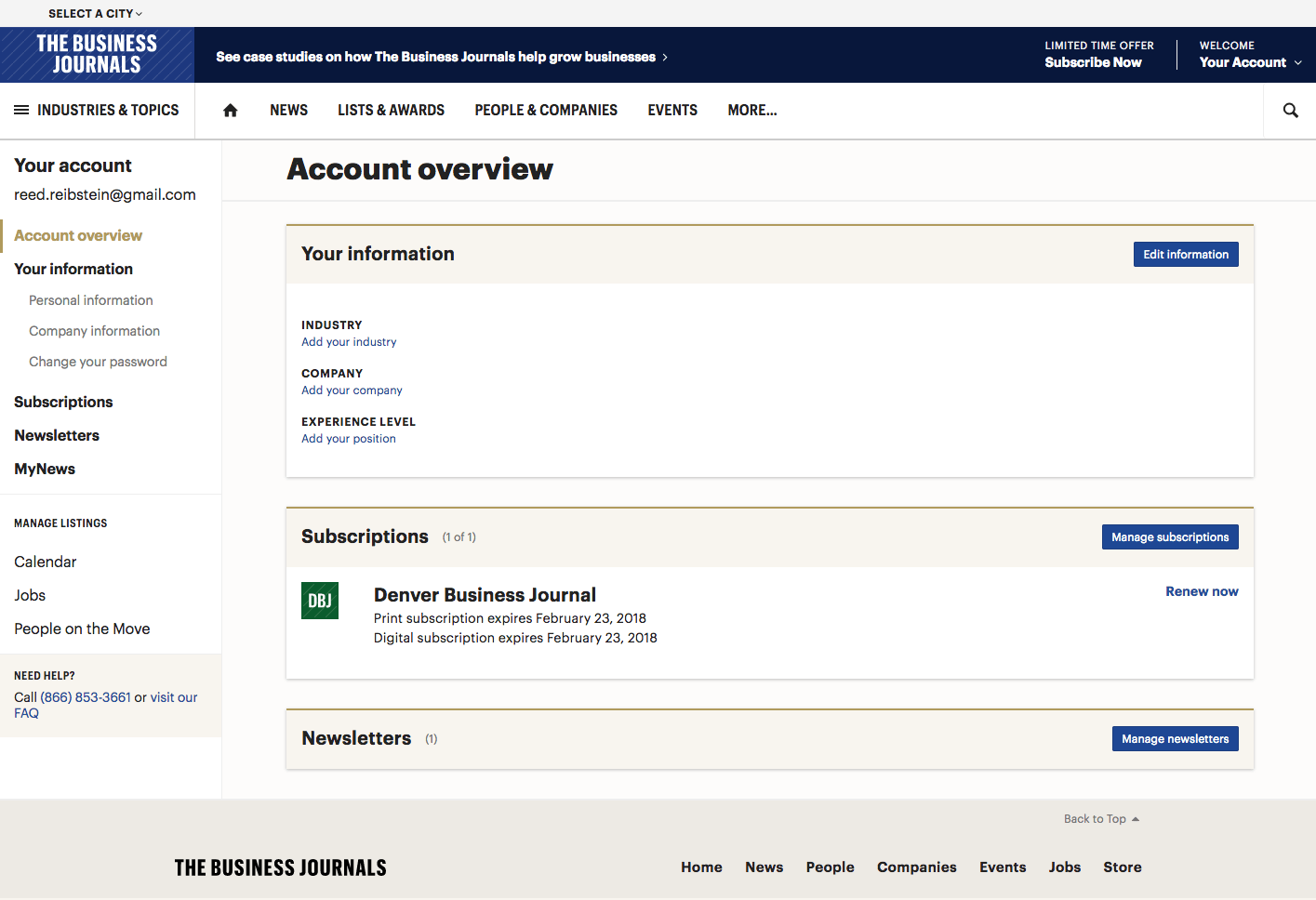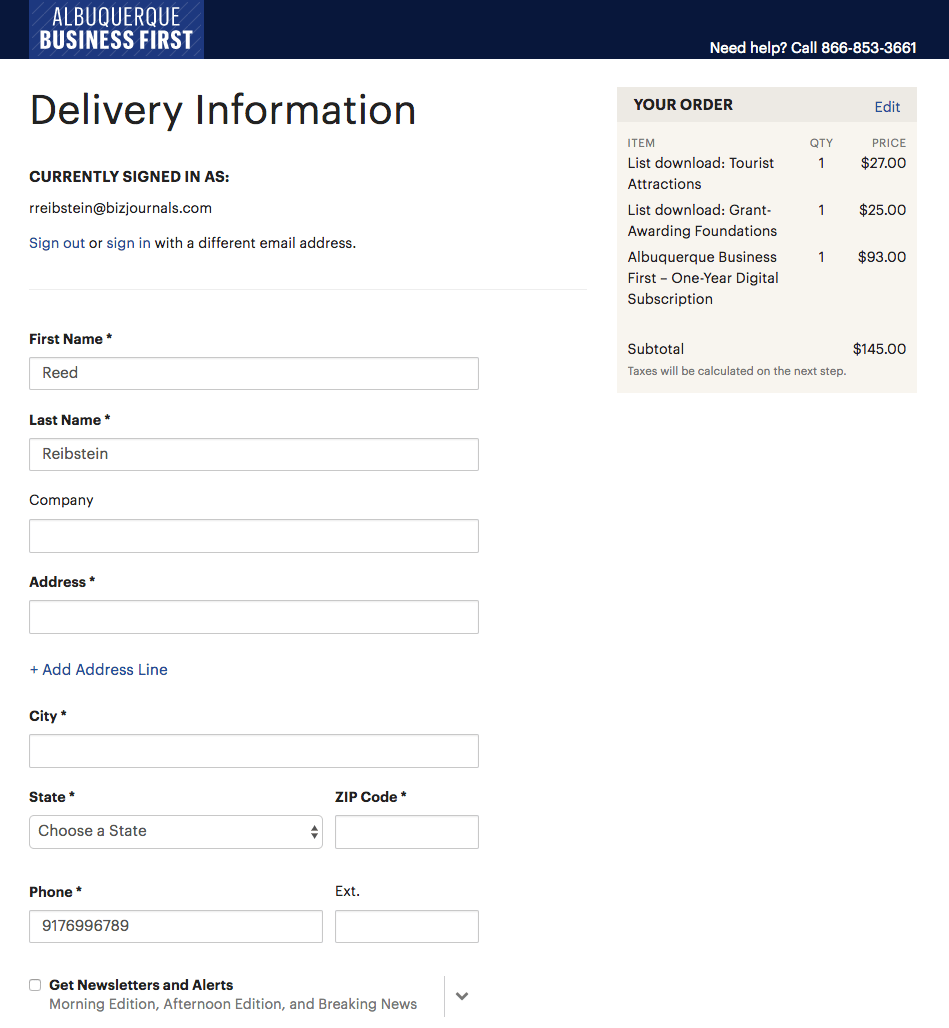→ Redesigning the homepages of 43 Business Journals
The Business Journals today do far more than just publish news stories—they offer numerous business tools and services, from finding new sales leads to promoting new hires. But our existing homepages confined these important products to a sidebar where they were easy to miss.
I directed the design work to redesign all 43 homepages, collaborating closely with several product designers on my team and the product manager to create a more dynamic homepage that showcased the breadth of our offerings while still keeping the latest news at its core.
We tested multiple rounds of homepage prototypes with users to understand whether the major shift in direction resonated with them. Based on this qualitative feedback, I proposed split testing an MVP versus the current homepage. Over three iterations, we substantially improved engagement, meeting our product goals before launching across the country in January 2019.
Case study PDF
